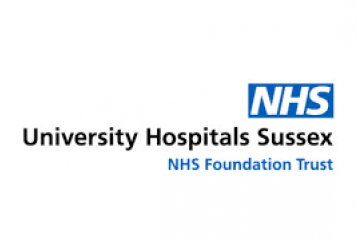Annual assessments of Brighton and Sussex University Hospitals

Each year, an annual Patient-Led Assessment is made of the Royal Sussex County and Princess Royal hospitals. Results from 2017 were published on 15th August showing improvements in most areas. Read on to find out more about this assessment, the results and the role of Healthwatch Brighton and Hove.
Patient-Led Assessments of the Care Environment (also known as PLACE visits) are an annual appraisal of the non-clinical aspects of NHS healthcare settings. They are undertaken by teams made up of hospital staff and members of the public, known as patient assessors. Healthwatch volunteers are part of this team.
PLACE assessments provide a framework for assessing quality against common guidelines and standards. They focus on the hospital environment looking in particular at:
- cleanliness;
- food and hydration provision;
- the extent to which the provision of care with privacy and dignity is supported; and,
- whether the premises are equipped to meet the needs of people with dementia or with a disability.
Results from the 2017 PLACE visit
In summary, the scores were generally good news for the Brighton and Sussex University hospitals (BSUH). They show that an improvement has been achieved in most areas since these assessments began in 2013.
When compared to 2016 there have been sizeable improvements in the ‘Dementia’ score (up 17% on 2016); ‘Disability’ score (up 14%), and ‘Food and Hydration’ score (up 10%). However, the score for ‘Privacy, Dignity and Wellbeing’ continued to worsen and is down 14% from a high of 83.5% in 2013.
When compared with national averages, the BSUH scores are lower than these in 4 areas: ‘Privacy, Dignity and Wellbeing’, ‘Condition, Appearance and Maintenance’, ‘Dementia’ and ‘Disability’; but the scores are higher for ‘Cleanliness’ and ‘Food and Hydration’.
Role of Healthwatch in conducting environmental care audits
Annual PLACE visits provide a one-off snapshot of the hospital environment which is not necessarily a good indicator of how well the environment is being maintained and expanded. In light of this, Healthwatch Brighton and Hove has agreed with the Trust to conduct “mini-PLACE” visits. These began in December 2016.
These monthly visits enable Healthwatch to undertake a regular review on the areas covered by PLACE: cleanliness; food; privacy, dignity and wellbeing; condition, appearance and maintenance; suitability of the environment for those with a disability and/or dementia.
These are beneficial to the Trust as the results from each monthly visit are fed back to the hospital so that they can respond to emerging issues sooner – and not just after an annual audit. In turn, they allow the Trust to benefit from an ongoing independent view of its care environment and make necessary improvements on a rolling basis.
Each month Healthwatch volunteers tour a designated area of the hospital accompanied by the Clinical Director Facilities and Estates, and Facilities Compliance Manager. Volunteers record their observations and complete a feedback sheet and final checklist which are shared with the hospital who in turn advise Healthwatch what actions they have taken to rectify identified issues or concerns.
The benefits of these visits cannot be underestimated. For example, in March this year Healthwatch visited two clinics located the Outpatients department of the Royal Sussex County Hospital (RSCH). Healthwatch was so concerned by what it saw that it raised these directly with the Managing Director of the RSCH . On a subsequent visit in September, Healthwatch saw significant improvements to both environments had been made. The Trust is to be applauded for taking such rapid action to improve these clinical environments, which are now judged to be safer, cleaner, and which also provide more professional and welcoming spaces for patients.


